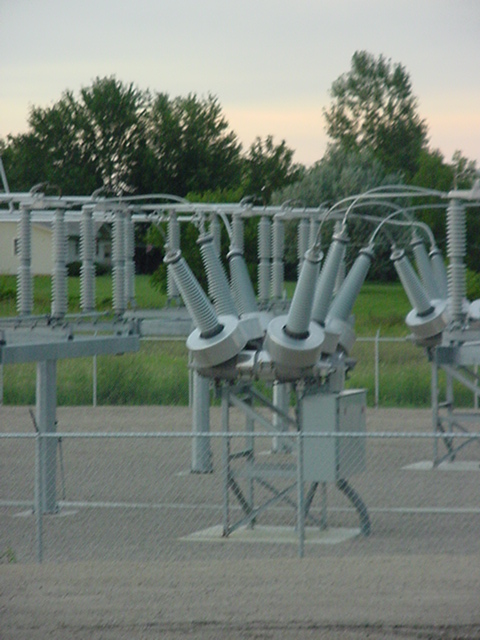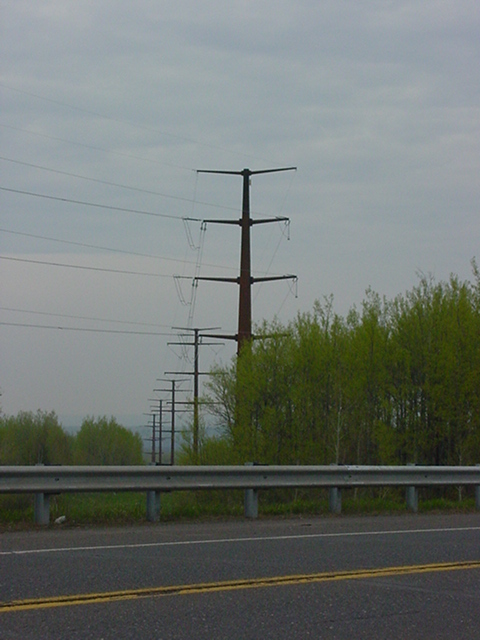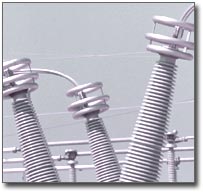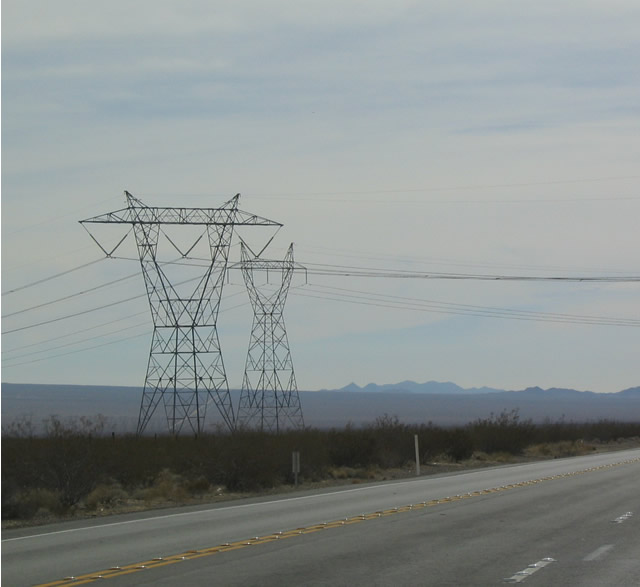Xcel Energy’s sales down AGAIN
October 25th, 2012
I love it when this happens. Yet again, Xcel demonstrates that demand is DOWN.
DOWN!
Here is their Sales (Decline) info (click for larger graphic):
And check wholesale sales — and be prepared for increases when CapX 2020 is up and running:
Waterloo Gets New 600MW Coal Plant
December 2nd, 2005

Days after Iowa Utilities Board issues a franchise to complete the transmission ring around the metro area, my client, Diane Schou, sends this from the local TV station:
Plans to build billion dollar plant
And it’s everywhere in the news there, I’ve never seen such a spread as there is in the Waterloo paper:
=
$1 billion Waterloo power plant proposed
By PAT KINNEY, Courier Business EditorWATERLOO — A New Jersey-based company has proposed what would be the single largest economic development project in Cedar Valley history — a $1 billion, 600-megawatt power plant in northeast Waterloo.
LS Power, based in East Brunswick, N.J., with offices in St. Louis, proposes building the massive facility on 320 acres of land along Newell Street east of Eagle Ottawa tannery. It is on land which is currently in Black Hawk County but would be annexed into the city of Waterloo, pending approval by the City Council and the county Board of Supervisors.
Also pending state and federal regulatory approvals, construction of the coal-fired power plant would begin in 2007 and be completed in 2011.
The plant would employ up to 1,200 construction workers over the four-year period at a total construction payroll of $200 million. It would employ 100 permanent professional staff at a total annual payroll of $7 million, an average of $70,000 per permanent employee. LS Power would hire a private firm experienced in power plant operations and maintenance to staff and run the facility.
The plant would pay about $2 million a year total to Waterloo city and Black Hawk County governments and Waterloo schools in taxes. Utility companies do not pay property taxes but pay a “replacement tax” determined by the state based on the volume of power generated and other factors.
LS Power has developed, or is developing, several similar coal- and natural gas-fired facilities throughout the central United States, including sites in the South and upper Midwest. The independent power plant would sell power to municipal and investor-owned electric utilities and cooperatives.
“We’ve talked to a number of (potential) customers,” said Robert Colozza, project manager for LS Power Development. The company hopes to line up customers during the permitting and regulatory process, which could take up to two years.
“Essentially every utility cooperative in the region has announced or discussed some need for new coal-fired (generating) capacity,” Colozza said. “A big part of it is natural gas prices are up at all-time-high levels.”
LS Power has acquired options on all the real estate necessary to proceed with the project, Colozza said. It is primarily farm land, with two residences involved.
“We did a very extensive site search for what we believed to be the best site,” throughout the Midwest, Colozza said.
Local factors
The Waterloo site stood out because of:
— Rail access and the presence of multiple railroads in the area to supply coal.
— Access to a high voltage transmission system, with two major substations, one to the north of the city’s northeast industrial area, and another near Hazleton.
— Ample water supply. Colozza said waste water from the city of Waterloo sewage treatment plant can be cleaned on site, used for cooling and recycled.
— A large tract of land near an existing industrial area.
“There’s a lot of industry currently here, and we believe there’s an adequate work force for what we’re doing, and in the region there’s a large work force to draw from as well,” Colozza said. He estimated half the plant’s permanent work force would be current residents, or former residents returning to the area.
“I think this is a great fit” for the community, Waterloo Mayor Tim Hurley said. “The assets of our community have spoken for themselves — the transportation, the rail, the work force and the market.”
He praised Greater Cedar Valley Alliance officials for following through on the prospect.
The facility would be required to install extensive emission control equipment, and would be subject to the regulation of the U.S. Environmental Protection Agency, the Iowa Department of Natural Resources, the Iowa Utilities Board and the U.S. Army Corps of Engineers. It would require a number of state and federal permits, an open process for which public review and comment is required.
Colozza said the plant would provide a couple of additional environmental benefits.
Methane gas generated at Tyson Foods’ Waterloo operation, currently unused and “burned off” in the air, could be processed and burned with coal to generate electricity.
Also, he said fly ash from the burned coal would not be displaced in the air but recaptured and provided for fill material at local quarry operations such as Basic Materials Corp., to restore the land there as portions of quarry operations are exhausted.
The first public meetings on the project will occur in about three months. An “open house” is planned prior to the project coming before the city Planning, Programming and Zoning Commission.
The project has been in the works for about two years.
“Back in 2003, 2004, we held an initial round of meetings with the community to gauge public support for a project like this. … We received very positive response,” Colozza said.
While coal-fired power plants haven’t been built for 20 to 25 years, “the demand continues to grow,” Colozza said. With expected natural gas price increases, now is an opportune time for the company to proceed to build a plant utilizing coal, a less expensive and plentiful energy source with ample supplies in Wyoming and the western United States.
“This project is going to be here for a long time,” Colozza said. “We’re talking about a usable life of 40-plus years. Energy demands don’t go away. The project will always be running and needed, and so will be a steady source of revenue and jobs.”
It will also be a low-cost provider of energy to the region, which will boost additional economic development, he said.
It would be the largest single construction project ever seen in Waterloo-Cedar Falls, topping the estimated $500 million Deere & Co. spent in the 1970s to build or modernize all its present-day facilities here, culminating with construction of the East Donald Street Tractor Works in 1979-80.
The largest projects since then would have been IBP, now Tyson Foods, in 1990 and the Target Distribution Center in Cedar Falls in 2003, valued at about $40 million to $45 million each; and Deere’s current $127 million, multi-year redevelopment of its Westfield Avenue and East Donald Street facilities, announced in 2000 and still in progress. Isle of Capri’s proposed casino project south of Crossroads Center, for which work has just begun, is estimated at about $100 million. It is to be completed in 2007.
LS Power’s record
Founded in 1990, LS Power has developed, built and sold nine different natural gas-fired power plants in the South and upper Midwest 1998 and again 2001 when they became hot commodities.
“It wasn’t necessarily our business intent, rather a function of the energy market at that time. There was a very high premium placed on generation capacity in the late ’90s, early 2000, and so we capitalized on that opportunity,” Colozza said.
LS Power isn’t proposing to build the Waterloo operation in anticipation of selling it, Colozza said. “Our intent going forward is to develop, own, and operate the plants over a long term,” Colozza said. “But, of course, we are a business, and so we had a business opportunity at that point” to sell the nine plants in 1998 and 2001.
He noted that whichever entity operates the Waterloo plant still would have to abide by state and federal environmental standards. And, he said, “they’ll still pay the same taxes.”
LS Power currently operates three gas-fired plants and has four other coal-fired projects in the works in Arkansas, Nevada, Georgia and Texas.
When LS Power initially approached Greater Cedar Valley Alliance officials two years ago, Alliance business services manager Linda Laylin said her organization did a substantial amount of “due diligence” researching LS Power over that time, looking at financial reports and consulting with state economic development officials previously in contact with them.
“That information demonstrated to us their capability” to do what they have proposed, Laylin said. The company recently closed on a $1.2 billion private equity fund to leverage financing for their projects.
“From what I can tell, it seems to be a well-organized company in the electric energy business,” said GCVA executive director Steve Dust, who previously worked in the power industry with MidAmerican Energy and predecessor utilities. LS Power’s reputation has grown in the two years since they approached local officials, he said
“The (proposed) plant is characteristic of where the industry is right now … in terms of developing to meet the needs of wholesale power buyers in different regions of the country,” Dust said.
Dust suggested any change in ownership, and LS Power’s plans to contract with a professional private firm to staff and maintain it, would be analogous to another commercial property such as a shopping center either changing hands, or the developer/owner hiring a professional management firm to run it.
Additionally, the power industry is “a very regulated business,” Dust said, and Alliance staff will continue to perform “due diligence” research on the company in preparing a development agreement with them.
Laylin suggested some state funds may be pursued for road and other infrastructure improvements serving the proposed plant, as well as state job training tax credits. Colozza said his company is interested in hearing what incentives may be available, but is not seeking tax abatements.
Here are locals falling over themselves praising the plant:
Power plant has list of supporters
PPBBBBBBBBBFFFFFTTTT! says the Iowa Utilities Board
September 24th, 2005
Would you want to live in this house if there’s a 161kV transmission line on the other edge of the road?
The decision on the Schou appeal came down from the Iowa Utilities Board. Here it is, and I’ll refrain from comments now because I’m on the way downtown and probably wouldn’t phrase it with the care that I should!
Decision: Download file
Note that they invited appeal on 7 out of about 10 issues we raised, and they address how many? And the others they said didn’t matter. Oh, right…
Call the welcome wagon for the new neighbors? Not quite yet!!!

Electrical fields can make you sick
September 12th, 2005
That’s the headline in the Sunday Times – Britian. It’s about time that another government acknowledged what a friend in reinsurance calls “the next asbestos.”
(And a translation for those of us on this side of the pond — pylons are transmission line structures, and masts are the cellular towers!)

Electrical fields can make you sick
Sarah-Kate Templeton, Medical Correspondent
A GOVERNMENT agency has acknowledged for the first time that people can suffer nausea, headaches and muscle pains when exposed to electromagnetic fields from mobile phones, electricity pylons and computer screens.
The condition known as electrosensitivity, a heightened reaction to electrical energy, will be recognised as a physical impairment.
A report by the Health Protection Agency (HPA), to be published next month, will state that increasing numbers of British people are suffering from the syndrome. While the total figure is not known, thousands are believed to be affected to some extent.
The report, by the agency?s radiation protection division, is expected to say that GPs do not know how to treat sufferers and that more research is needed to find cures. It will give a full list of the symptoms, which can include dizziness, irregular heartbeat and loss of memory.
Although most European countries do not recognise the condition, Britain will follow Sweden where electrosensitivity was recognised as a physical impairment in 2000. About 300,000 Swedish men and women are sufferers.
The acknowledgement may fuel legal action by sufferers who claim mobile phone masts have made them ill.
In January Sir William Stewart, chairman of the HPA and the government?s adviser on mobile phones, warned that a small proportion of the population could be harmed by exposure to electromagnetic fields, and called for careful examination of the problem.
The HPA has now reviewed all scientific literature on electrosensitivity and concluded that it is a real syndrome. The condition had previously been dismissed as psychological.
The findings should lead to better treatment for sufferers. In Sweden people who are allergic to electrical energy receive government support to reduce exposure in their homes and workplaces.
Special cables are installed in sufferers? homes while electric cookers are replaced with gas stoves. Walls, roofs, floors and windows can be covered with a thin aluminium foil to keep out the electromagnetic field ? the area of energy that occurs round any electrically conductive item.
British campaigners believe electrical devices in the home and the workplace, as well as mobile phones emitting microwave radiation, have created an environmental trigger for the syndrome.
There is particular concern about exposure to emissions from mobile phone masts or base stations, often located near schools or hospitals.
In January Stewart also called for a national review of planning rules for masts. The review was launched by the government in April.
British sufferers report feeling they are being ?zapped? by electromagnetic fields from appliances and go out of their way to avoid them.
Some have moved to remote areas where electromagnetic pollution is lower.
The HPA report is eagerly awaited by campaigners. Alasdair Philips, director of the campaign group Powerwatch, said: ?This will help the increasing number of people who tell us their GPs do not know how to treat them.?
Rod Read, chairman of Electrosensitivity UK, added: ?This will be the beginning of an awareness of a new form of pollution from electrical energy.?
DIANE AND BERT SCHOU – ON THE FRONT LINE OF ELECTRICAL SENSITIVITY
This is the issue for my clients, Diane and Bert Schou, in Cedar Falls, Iowa, who are battling Cedar Falls Utilities and the Iowa Utilities Board, working toward having the permit denied or the transmission line rerouted. It’s important to put a face on electrical sensistivity — this is very real. Diane Schou is very real, her injuries are real.
Diane has developed electrical sensitivity, and it has made life very, very difficult. Every day, she must take extreme precautions to protect herself from the signals emitting from a local cell tower. There is a LOT of information out there on EMF, electrical sensitivity, biological impacts, and precautions that should be taken, including:
EMF-RAPID report
A pooled analysis of magnetic fields and childhood leukaemia
Black on White, just published in English, the experiences of hundreds of people suffering from electric sensitivity. This is the site with the entire book, available for downloading. It’s BIG, be prepared.
Here are a couple of general sites with a LOT of information:
The Swedish Association for the Electrically Sensitive
The Power Line Task Force’s www.powerlinefacts.com
Now, to add injury to Diane’s electrical injury, Cedar Falls Utilities wants to put a transmission line 70 feet from her home, located directly on the other side of the road. And the Iowa Code requires that lines be sited only where it will not “inconvenience or cause undue injury” to affected property owners. The Administrative Law Judge of the Iowa Utilities Board did not take Diane Schou or Iowa law into account.
The route that Cedar Falls Utilities has chosen as their “preferred” route is odd, in that it doesn’t utilize already existing transmission corridors through the area, and that it goes right past a registered landing strip and the Schous’ home. It is carefully routed around all the new development in the area, development that equals the new residential load growth! The new substation is going up about a mile east on Ridgeway, the same road that Schous live on.
The new substation is located near the John Deere factory, but a look at the map shows that there are at least four substations named for Deere facilities — that’s the main load in the area. Deere seems to be the primary benefactor of this line.
Here’s the Des Moines Register article about their case:
Things have changed a bit since that article! Since the last blog report, when the Iowa Utility Board approved seven issues for appeal, a VERY favorable Order (here’s that Order), we’ve submitted our Initial Brief, as did Cedar Falls Utilities and the Office of the Consumer Advocate, and we submitted Reply Briefs as well. Cedar Falls Utilities has made three Motions to Strike, to strike me as their attorney, to strike Exhibits and to strike me as their attorney and my brief again! It’s been a legal marathon. We’ve replied to their Motions with a legal “pffffffffbbbbbbbbt!” and we’ll see how the Iowa Utiltiies Board rules.

Has a Cedar Falls utility met its “Waterloo?”
July 18th, 2005

It was Saturday morning, one of those times when I’d just as soon ignore the phone, but it was an Iowa number and I couldn’t resist. Good thing, too, it was one of those calls that makes life worthwhile, Bert and Diane Schou called for a consult on a transmission line going past their house. They’d participated in the Iowa Utility Board hearing, and the Order had just come out, and what an Order it was, as it too often is, dismissing all concerns raised and giving the utility just what it wants:
Here’s the Order of the Iowa Utility Board ALJ!
The Schou’s took an approach similar to that of the Power Line Task Force, which brought in scientific experts including cellular specialist Dr. Martin Blank for Direct Testimony and Rebuttal, and Magda Havas, except the Schou’s witnesses were participating by phone and written statement, and the Administrative Law Judge essentially paid no attention.
Meanwhile, Diane is suffering from electrical sensitivity, as are a growing number of people, and is trying to find relief. The DesMoines Register featured the Schou’s struggle earlier this month:
There is a LOT of information out there on EMF, including:
EMF-RAPID report
A pooled analysis of magnetic fields and childhood leukaemia
I’m short on time and can’t find it, but there’s this great HUGE California study… it’s got to be here somewhere…
The best most credible site on EMF, bar none, is Roger Conant and the Power Line Task Force’s Power Line Facts. CHECK IT OUT!
And while we’re on the topic of transmission, David Bly’s just blogged on Electricity: Whiners and Loosers.

